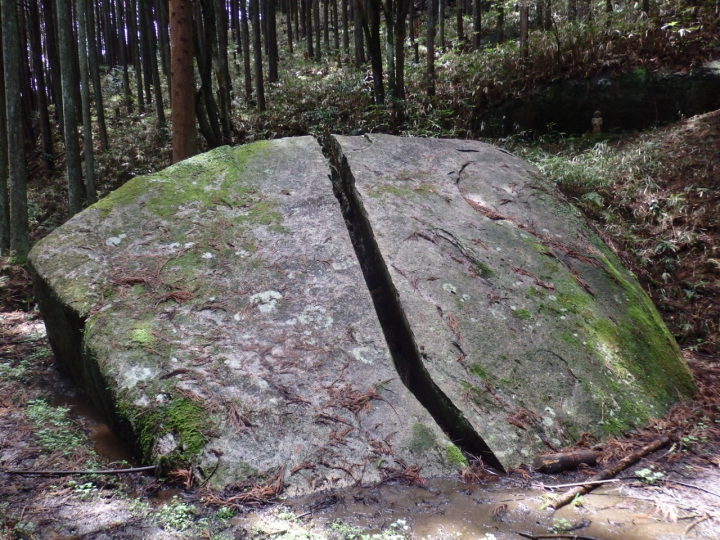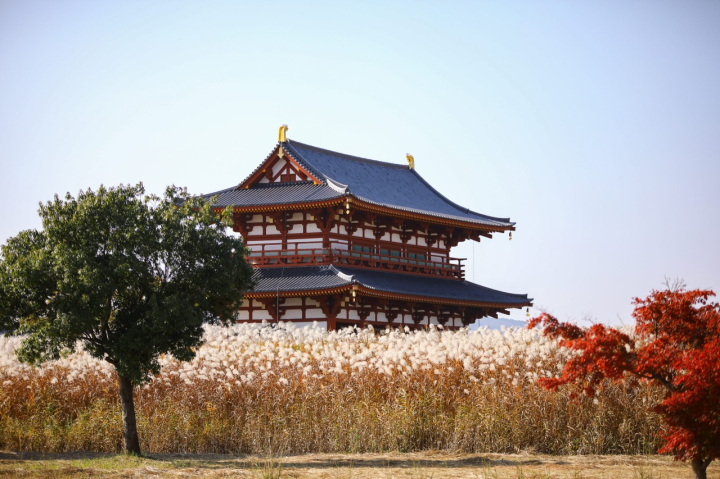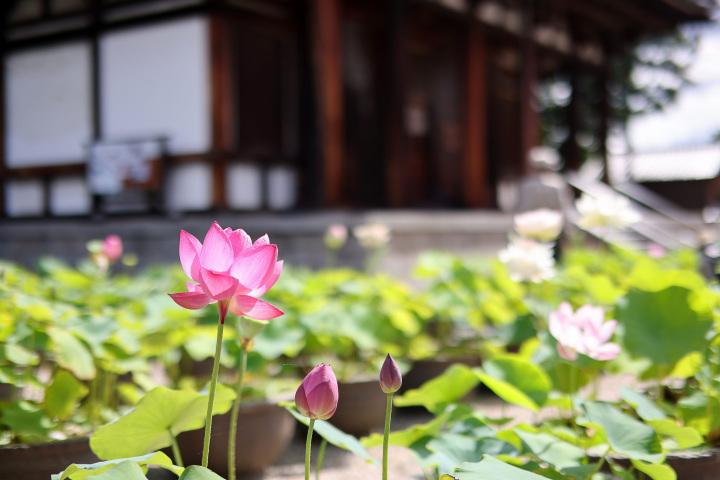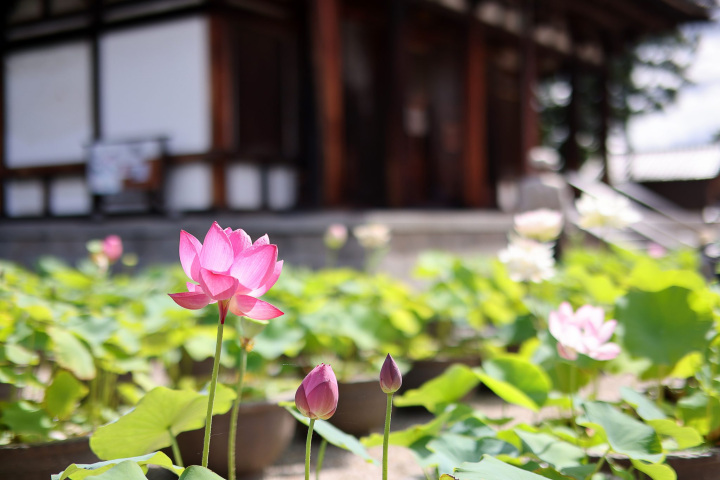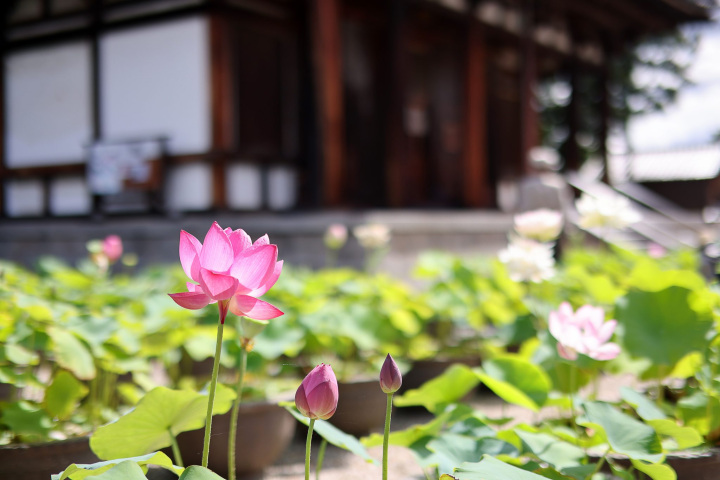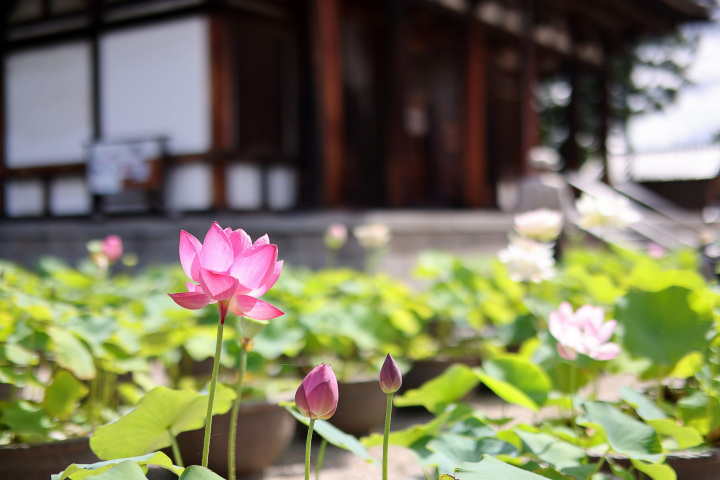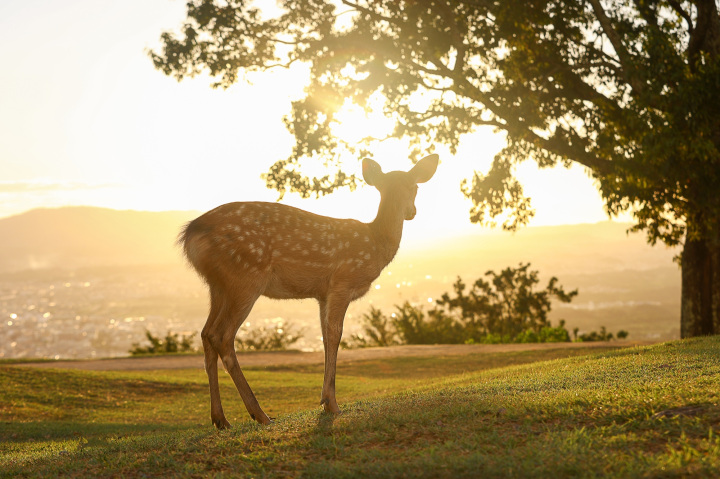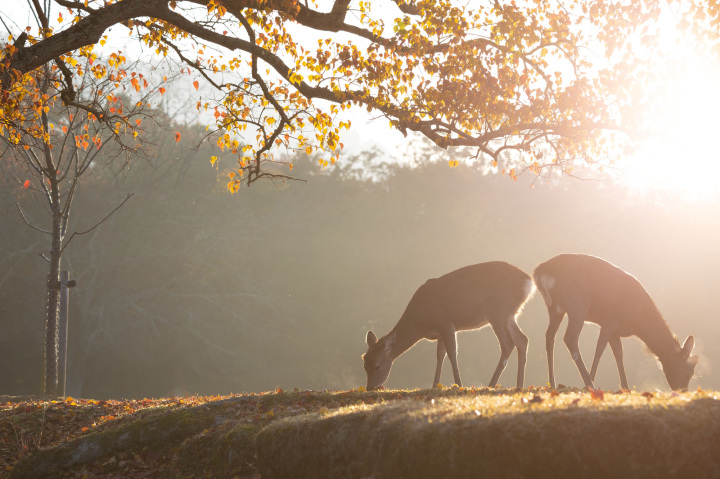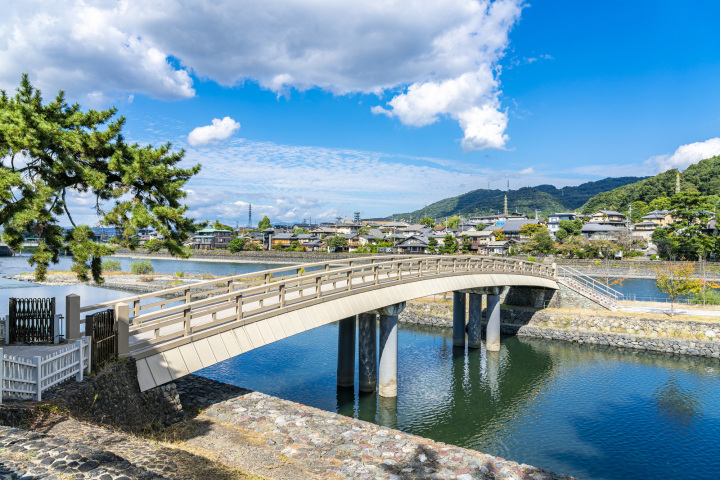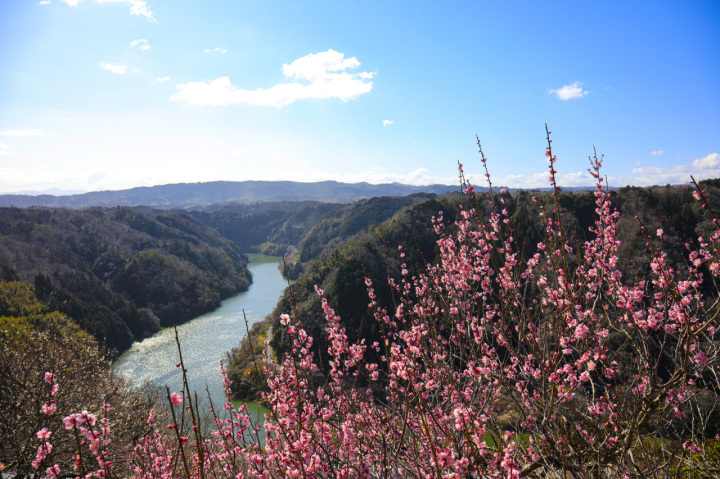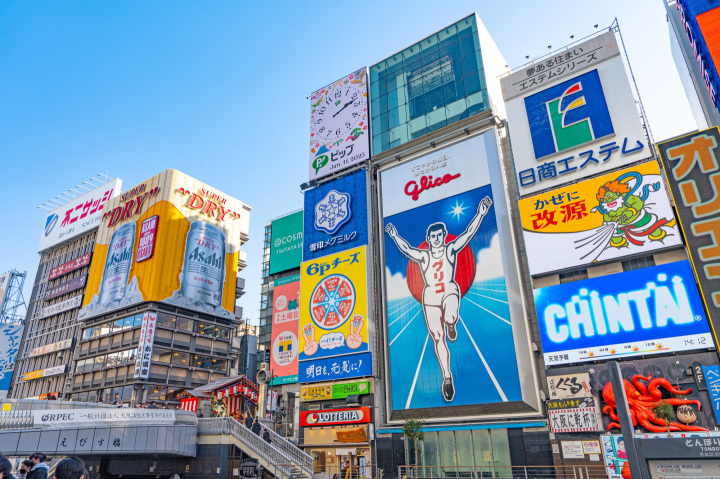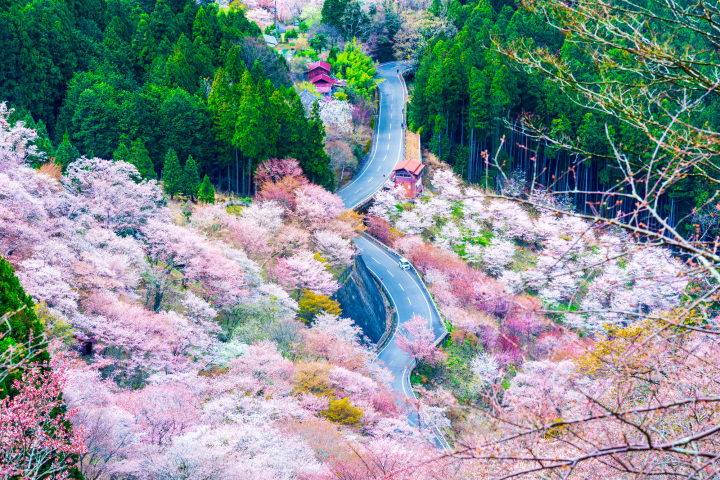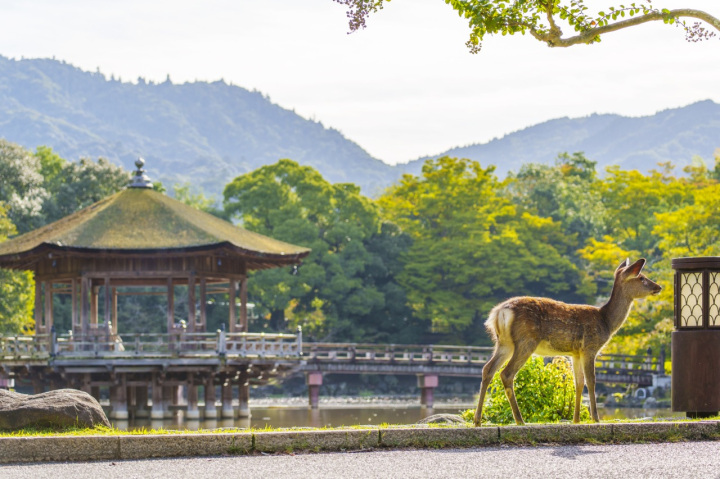Walking around World Heritage Sites in Nara to Fully Enjoy Its Attractive Features
Basic course to travel around key spots in Nara. Focuses on Nara Park and its vicinity, including World Heritage Sites such as Kohfukuji Temple, Todaiji Temple, and Kasugataisha Shrine.
【 Approx. 10 km 】
- Days required
- 2 hours
- Main methods of transportation
- walk
Itinerary features
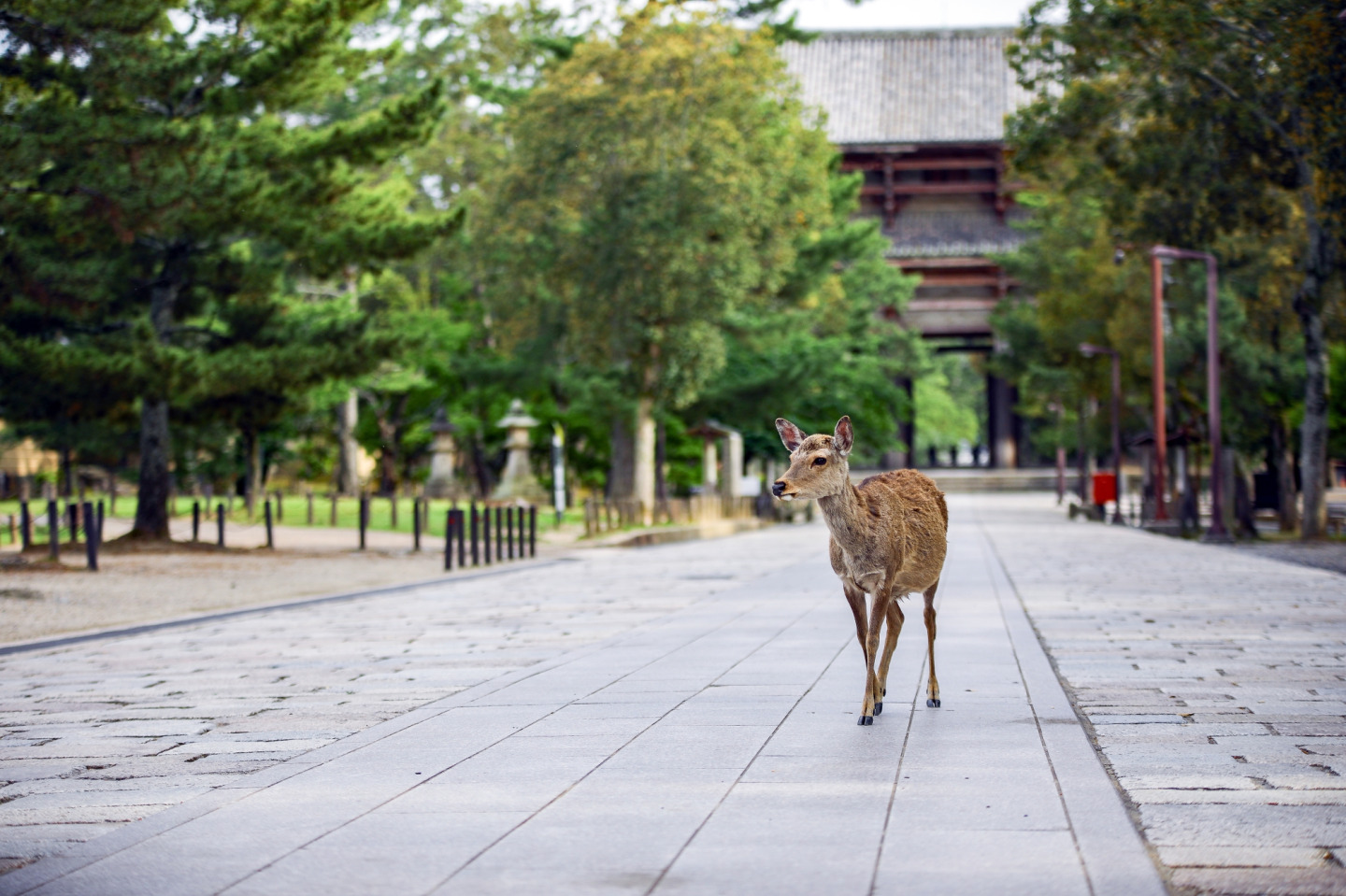
Kohfuku-ji Temple
The prosperity of Nara is deeply linked to the development of this temple.
![[ Undefined: coursed-title-plain ]](/lsc/upfile/spot/0001/0029/10029_1_l.jpg)
The Kohfukuji Temple was one of the seven most prominent temples of the Nara era and a tutelary temple of the Fujiwara clan, the most influential clan in Japanese history. Nara largely owed its prosperity to the temple's development.
In 710, the Fujiwara clan transferred the predecessor of the present Kohfukuji Temple from Asuka to the Nara capital. Then, the temple extended its influence with the Fujiwara family's prosperity even after the capital moved to Kyoto. The war in 1180 burned down most of the temple, however, in later years, Kohfukuji eventually became the practical ruler of Yamato Province (present Nara Pref.) until the 16th century. They were so influential that they repeatedly appealed to the Imperial Court in Kyoto with soldier monks.
The vast precincts of the temple include the Chukon-do Hall, the Tokon-do Hall, the Hokuen-do Hall, the Nan'en-do Hall, the Five-storied Pagoda, the Three-storied Pagoda, and the Treasure Hall, some of which were constructed in and after the 13th century. As for Buddhist sculptures, many famous articles and masterpieces of the Nara era exist. Of these 136 designated national treasures (Buddha statues, etc.) in Japan, 18 are housed at Kohfukuji Temple. The most famous statue is the Asura Statue.
The five-story pagoda is currently undergoing long-term repair work and cannot be seen from the outside.
- Address
- Nara City48 Noborioji-cho
- Times
- open from 9:00 a.m. to 5:00 p.m. (Last entry is at 4:45 p.m.)
- Closed
- Open all year
Nara Park & Tobihino
Vast grassy area of Kasugataisha Shrine where herds of deer playing freely
![[ Undefined: coursed-title-plain ]](/lsc/upfile/spot/0001/0125/10125_1_l.jpg)
Tobihino, located on the grounds of Kasugataisha Shrine, is a vast grassy area facing the main sando (approach) to the shrine. In the past, it was also known as Kasugano. It was an ancient place of worship that overlooked Mt. Mikasayama. During the Manyo period (629-759), aristocrats played polo here, and in the Heian period (794-1192), it became a famous recreational spot for picking young leaves and viewing cherry blossoms.
Here, you can see herds of deer playing freely. The Shika Yose (Deer Gathering) event is also held here. It utilizes the musical tones of a natural horn to gather the deer in a specific location.
- Address
- Nara CityKasugano-cho
Kasugataisha Shrine
The shrine of the Fujiwara clan associated with the legend of the divine deer.
![[ Undefined: coursed-title-plain ]](/lsc/upfile/spot/0001/0058/10058_1_l.jpg)
The Kasugataisha Shrine is situated in a primeval forest. The brilliant vermilion structures beautifully contrast with the surrounding greenery. Passing through the first and second Torii gates, you can see numerous stone lanterns standing on both sides of the path leading to the shrine. Continuing further, you will reach the main hall. From the gate, a corridor extends to both the left and right. A significant number of lanterns hang from the eaves of the corridor, which are illuminated twice a year (2/3 and 8/14-15).
When the capital was transferred to Nara in 710, the Fujiwara clan held a mass for the family's tutelary deities, which is considered the origin of this shrine.
The shrine was established here in 768. Like the Kohfukuji Temple, it flourished alongside the Fujiwara family even after the capital moved to Kyoto. After the Middle Ages, this belief became widespread among common people, as evidenced by the fact that both dignitaries and ordinary citizens donated various hanging and stone lanterns.
The tutelary deities enshrined here are Takemikazuchi-no-Mikoto from Kashima (Ibaraki Prefecture), Futsunushi-no-Mikoto from Katori (Chiba Prefecture), and Amenokoyane-no-Mikoto and Himegami from Hiraoka (Osaka Prefecture).
- Address
- Nara City160 Kasugano-cho
- Times
- Opening Hours:
March to October: 6:30 AM to 5:30 PM
November to February: 7:00 AM to 5:00 PM
■National Treasure Hall
9:00 AM to 5:00 PM (Last admission at 4:30 PM)
■Kasuga Taisha Shrine Manyo Botanical Garden
9:00 AM to 4:30 PM (Last entry at 4:00 PM) - Closed
- ■Treasure Hall: Closed except during three annual special exhibitions.
■Kasuga Taisha Shrine Manyo Botanical Garden
・April-May: Always open
・June-March: Closed on Tuesdays
(Should national holidays fall on a Tuesday, the garden will be closed the following day)
Mount Wakakusa
Visitors can enjoy a breathtaking view of the incredible sunsets and night skies from a 342-meter-high mountain.
![[ Undefined: coursed-title-plain ]](/lsc/upfile/spot/0001/0108/10108_1_l.jpg)
Mount Wakakusa is a triple-layered mountain covered in grass. From its 342-meter-high summit, visitors can enjoy a typical view of Nara, which includes Todaiji Temple, Nara Park, Nara City, and Mt. Ikoma. Sunsets and night views, recognized as one of Japan's three most beautiful nightscapes, are also worth experiencing. The summit is accessible by a toll road for cars or on foot.
In recent years, many tourists have been watching the sunset from the base of Mount Wakakusa, which is within walking distance of Todaiji Temple and Kasuga Taishashrine. One of the most famous events is the annual "Yamayaki," during which vast brushwood on the mountainside is set on fire. The spectacular sight of the fire blazing into the night sky truly deserves the title of a festival of fire.
- Address
- Nara City469 Zoshi-cho
- Times
- 9:00 a.m. - 5:00 p.m. (Excluding special mountain access periods)
Todai-ji Temple
Nara's most famous temple, featuring its principal image, the Vairocana Buddha, is known worldwide as the Great Buddha of Nara.
![[ Undefined: coursed-title-plain ]](/lsc/upfile/spot/0001/0001/10001_1_l.jpg)
Todaiji Temple and its principal image of the Great Buddha, widely known as Daibutu, represent Nara in all its aspects. Daibutsu is housed in an imposing wooden structure that is the largest in the world.
As the imperial ordinance for the construction in 743, the Great Buddha was cast under full state sponsorship and people's cooperation. The consecrating ceremony was held in 752. It took almost 40 years to complete the whole temple complex, including pagodas, halls, and gradually extended areas. Even after the capital moved to Kyoto, the temple enjoyed its prosperity under the protection of successive emperors. However, the two big wars attacked the temple in 1180 and 1567, severely damaging or burning most of it.
However, with tremendous efforts, the temple was restored each time. Many of the current buildings were reconstructed after that. However, a large number of noted Buddhist statues and buildings from the Nara era remain. Todaiji Temple is a Unesco World Heritage site.
A typical sightseeing course is as follows:
the Nandai-mon Gate
the Daibutsu-den Hall
the Belfry
the Shunjo-do Hall
the Sammai-do Hall (Shigatsu-do)
the Hokke-do Hall (Sangatsu-do)
the Kaisan-do Hall
the Nigatsu-do Hall
the Tegai-mon Gate
the Kaidan-in
Even if you quickly complete the whole course, it takes 4 hours. If you don't have much time, it's better to focus on the Daibutsu-den Hall first, then the Nigatsu-do Hall (the Hall for the Shunie ceremony in March), where you can see an incredible sunset in the west.
(15 minutes' walk from Kintetsu Nara Station)
- Address
- Nara City406-1 Zoshichou
- Times
- ■Great Buddha Hall (Daibutsuden)
April to October: 7:30 AM - 5:30 PM
November to March: 8:00 AM - 5:00 PM
■Hokkedo Hall (Sangatsudo) & Kaidando Hall
Open year-round: 8:30 AM - 4:00 PM
■Todaiji Temple Musem
April to October: 9:30 AM - 5:30 PM (last entry at 5:00 PM)
November to March: 9:30 AM - 5:00 PM (last entry at 4:30 PM) - Closed
- Open all year
Nara National Museum
The treasure trove of Buddhist art hosts the "Shosoin Exhibition" every autumn.
![[ Undefined: coursed-title-plain ]](/lsc/upfile/spot/0001/0043/10043_1_l.jpg)
Many masterpieces of Buddhist art, including Buddhist sculptures and paintings, are on display, and the Nara Buddhist Temple has nearly 100 Buddhist statues on permanent display.
The New Building hosts special exhibitions approximately twice a year. Notably, the autumn Shosoin Exhibition draws many fans from across the country.
The Main Building, completed in 1894 and designed by Katayama Tokuma, who also worked on Akasaka Palace (State Guest House), is designated an Important Cultural Property as a representative example of Western-style architecture from the Meiji period.
- Address
- Nara City50 Noborioji-cho, Nara 630-8213
- Times
- 9:30 a.m. - 5:00 p.m. (Last entry at 4:30 p.m.)
*Hours may be extended for special exhibitions and other events. Please check the official website for details. - Closed
- ・Mondays (Or the following day on weeks in which Monday is a public holiday. In cases of consecutive holidays, the museum remains open and closes the day after they end.)
・December 28 - January 1
Isui-en Garden/Neiraku Museum
![[ Undefined: coursed-title-plain ]](/lsc/upfile/spot/0001/0050/10050_1_l.jpg)
Isui-en Garden was originally constructed by a Nara tanner, who lived within the garden grounds. The garden was designated as government property in 1975. The garden landscape makes use of the surrounding Mount Wakakusa, Mount Kasuga, and the roof of Todai-ji Temple's great gate in its design, making it appears as though the fields of Mount Wakakusa continue uninterrupted down into the garden itself and across its little hills. The garden grounds also contain Neiraku Museum, which carries a collection of art from East and West alike.
- Address
- Nara City74 Suimon-cho
- Times
- 9:30 a.m. - 4:30 p.m. (Last entry at 4:00 p.m.)
- Closed
- Tuesdays (Or the following day when Tuesday is a national holiday. )
During the garden maintenance periods.(From the end of Dec. to the middle of Jan. and the last third of Sep..)
